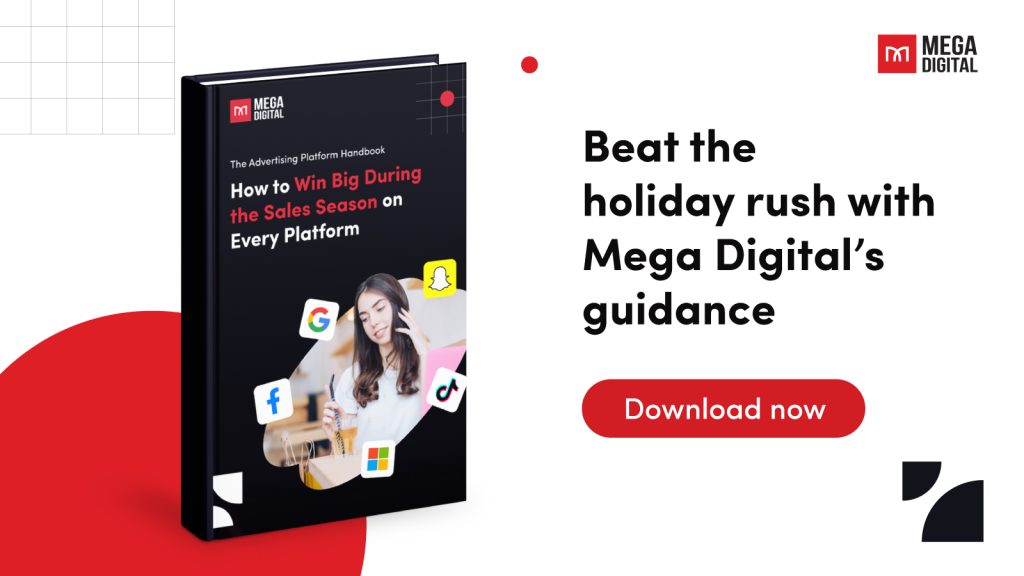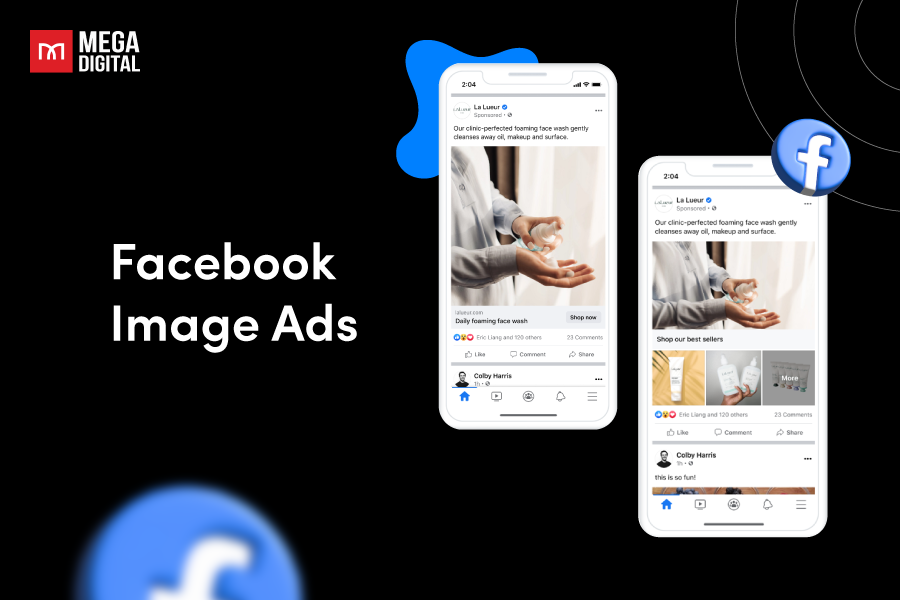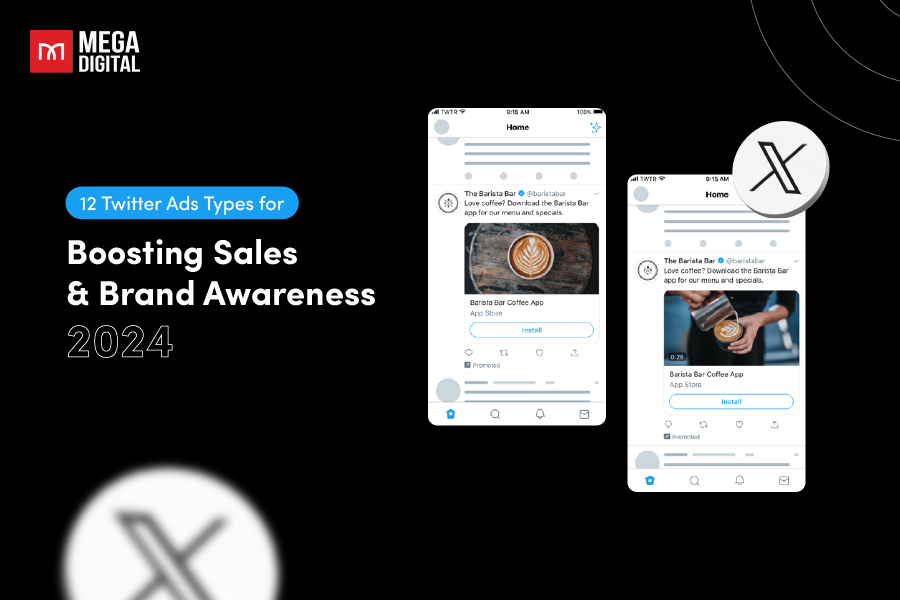Choosing the right platform for e-commerce PPC is crucial for your advertising campaign and Facebook PPC advertising is one of the most powerful tools that enables businesses to reach highly targeted audiences and drive sales effectively. In this blog post, you’re going to learn exactly everything about Facebook PPC advertising, from definition to best practices for success.
- What is Facebook Ads Pay-per-click?
- Where Can Your Facebook Ads Appear?
- Benefits of Facebook Ads Pay-per-click?
- How Does Pay Per Click on Facebook Work?
- How Much Does a Facebook PPC Campaign Cost?
- PPC Ads for Facebook: Best Practices
- How to Measure the Success of Your Facebook PPC Campaign
- Examples of PPC Facebook Advertising
What is Facebook Ads Pay-per-click?
Facebook Ads Pay-Per-Click (PPC) is an advertising model where businesses pay Facebook each time a user clicks on their ad. This form of PPC allows advertisers to promote products or services to a highly targeted audience based on demographics, interests, and behaviors.
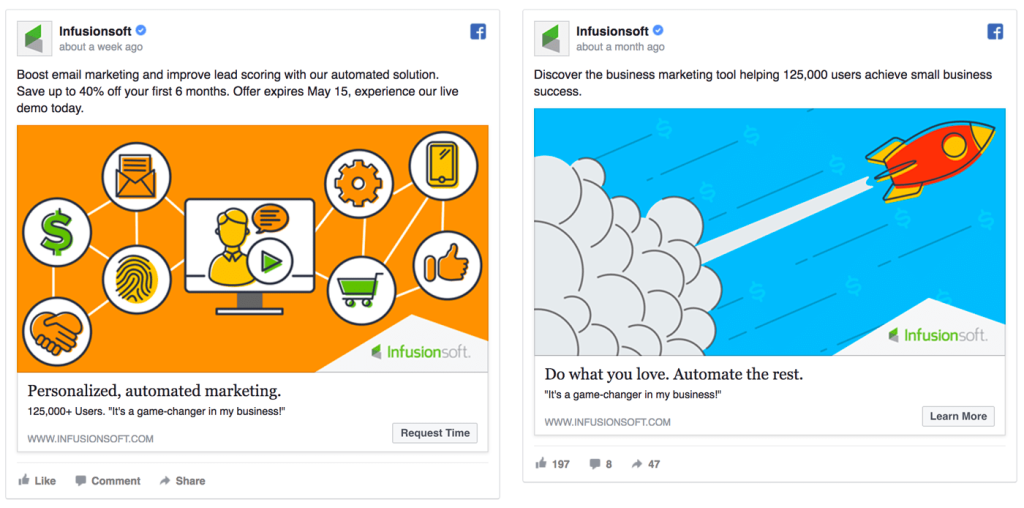
In addition, Facebook ads PPC includes various ad formats like image ads, video ads, carousel ads, and more.
Facebook also provides advanced targeting options, allowing advertisers to reach specific customer segments, control ad budgets, and track performance metrics to optimize their campaigns.
Where Can Your Facebook Ads Appear?
Facebook allows you to display your ads in various locations across its platform, ensuring your message reaches your target audience wherever they’re most active. This flexibility lets you adjust your ads to appear in the places where your customers are likely to engage the most.
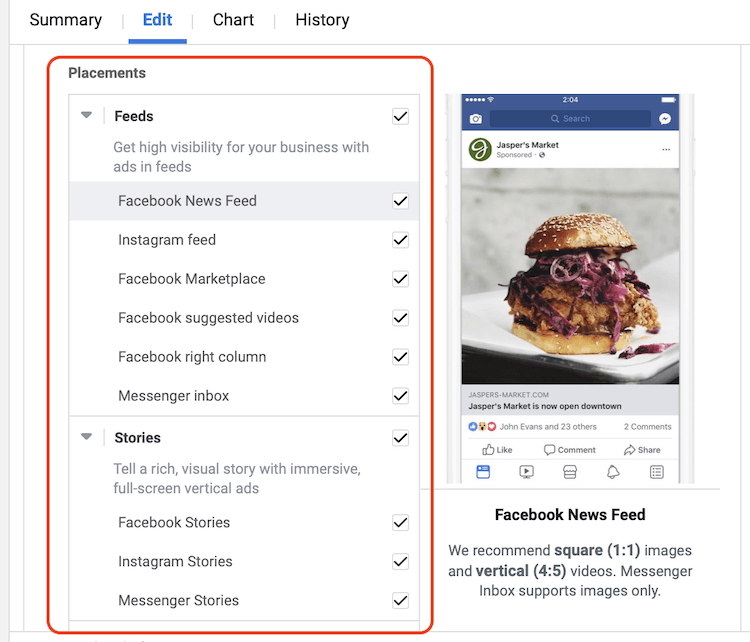
When using Facebook advertising, your ads can show up in:
- News Feed: Ideal for capturing users in discovery mode, especially with visually appealing or story-driven content.
- Stories: Great for time-sensitive promotions or brand messages that need an immediate impact.
- Messenger: Effective for personalized offers and one-on-one engagement with users in a conversational mindset.
- Instagram Feed and Stories: Perfect for reaching younger audiences, especially for visually-driven brands in lifestyle, fashion, or food.
Benefits of Facebook Ads Pay-per-click?
Now that we’ve learned about what is Facebook ads PPC, here are some of the advantages of using it you should consider.
Large Global Audience
Facebook’s 2.9 billion users mean your ads have the potential to reach a vast, diverse audience to expand your customer base and help you connect with new markets.
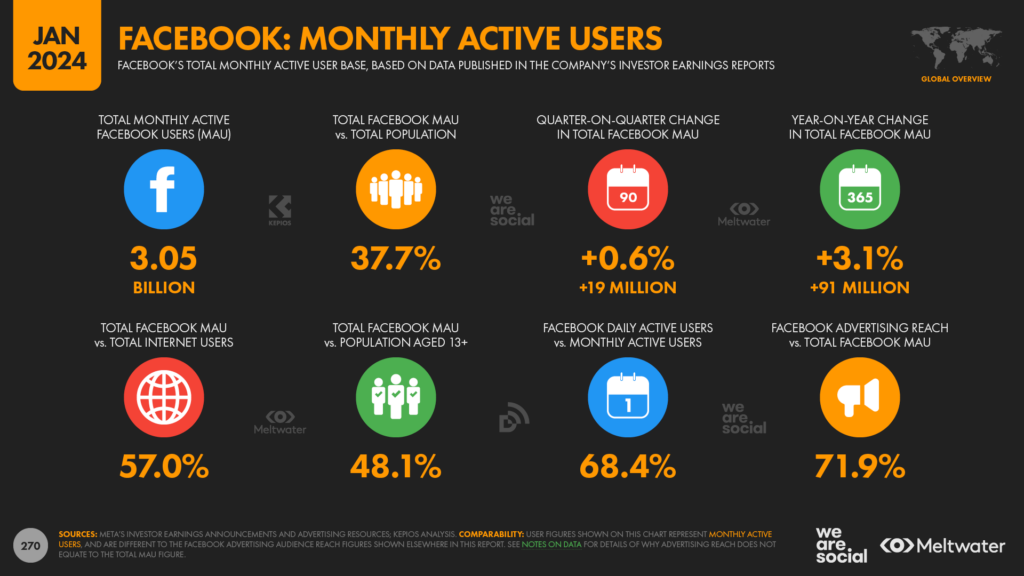
For example, by using Facebook Ads, your brand could attract customers from different regions, just like Adidas did when they garnered 30 million video views through their sustainable clothing in just a few weeks. This exposure directly led to a 12% increase in sales of those products within the first month.
Targeted Audience
Another of Facebook’s standout features is its highly advanced audience targeting. Advertisers can narrow down their audience based on factors like location, age, interests, or even behaviors to not only reach more relevant customers but also spend ad budget more efficiently.
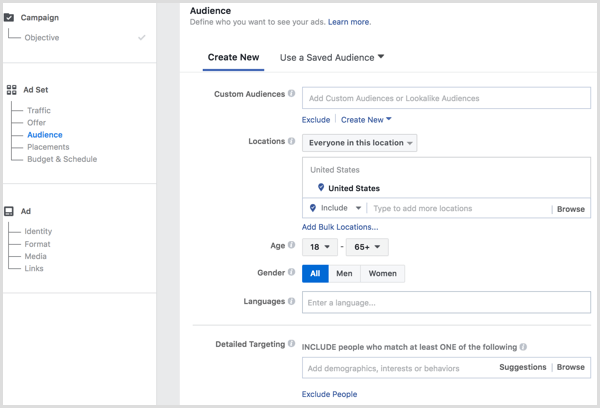
Let’s take a look at Uber Eats, which used Facebook’s precise targeting to boost app downloads by 45%. By honing in on users likely to order food, they also reduced their cost-per-install by 20%, proving that accurate targeting leads to better conversions and cost efficiency.
Low Cost
Finally, Facebook Ads PPC can be incredibly cost-effective, offering options to fit virtually any budget. The average cost-per-click (CPC) is just $0.97, making it accessible even for smaller businesses. You can set daily or lifetime budgets to control your spending.
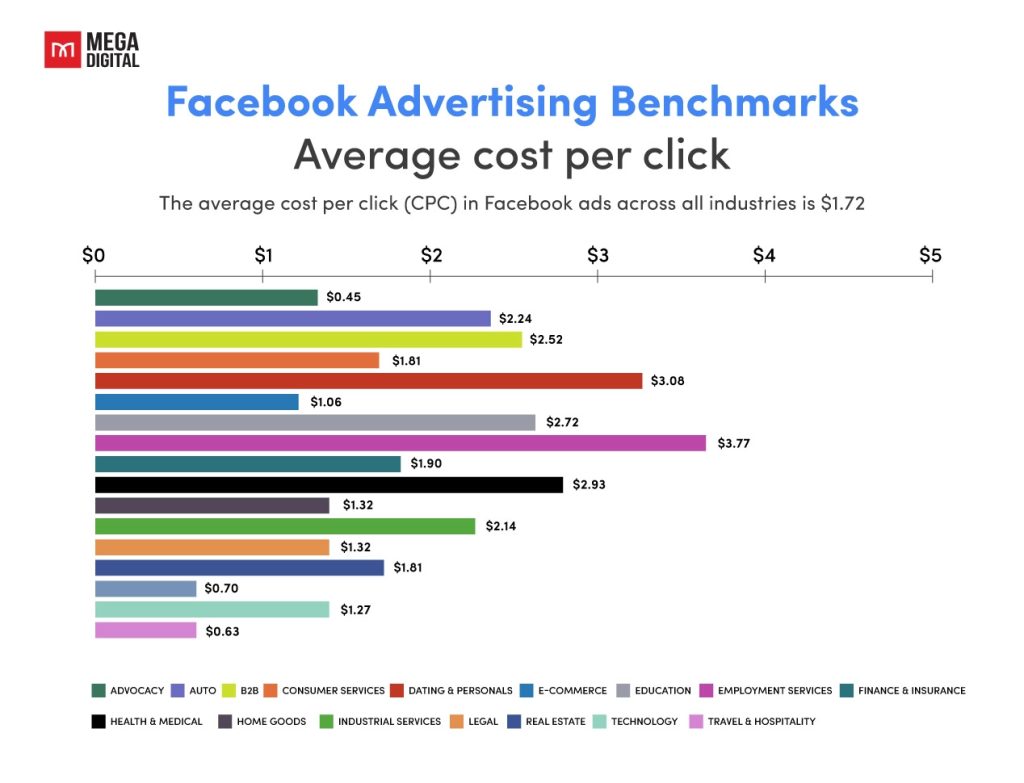
Take Gymshark, for example – despite their modest budget, they generated over $1 million in sales during a Black Friday campaign with a CPC of only $0.30.
How Does Pay Per Click on Facebook Work?
Facebook’s PPC model is simple: you bid for ad placements in an auction-based system. This means you have full control over your budget, and you can optimize bids to get the best possible results.
With Facebook Ads Manager, you can track Facebook ads metrics like click-through rate (CTR), cost-per-click (CPC), and conversions to fine-tune your campaigns and maximize your return on investment (ROI).
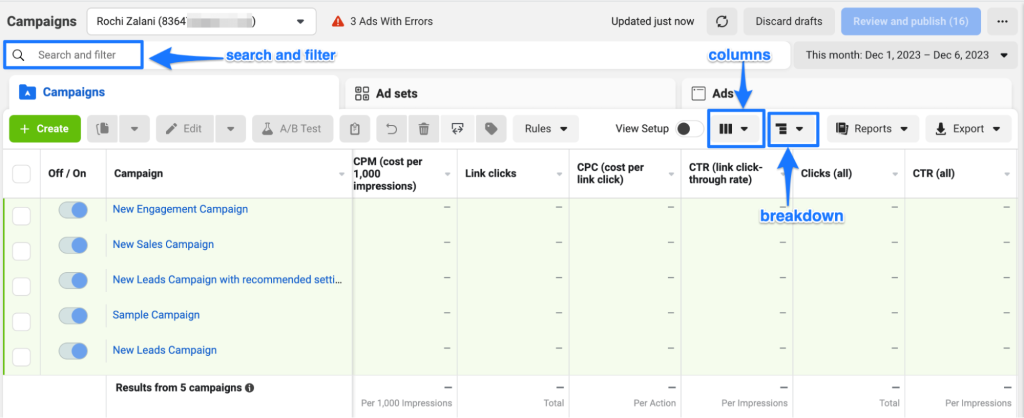
Here’s a quick breakdown of how Facebook PPC advertising works:
- Ad creation and targeting: Design your ads and set targeting based on demographics, interests, and behaviors. You can also target lookalike audiences similar to your current customers.
- Budget and schedule: Set a daily or lifetime budget and define the ad duration. Facebook ensures your ads run consistently within your budget.
- Bidding system: Choose manual bidding for more control or automatic bidding for Facebook to optimize results based on your budget.
- Performance and analytics: Track performance using Meta Ads Manager with metrics like CTR, CPC, and conversions to adjust and improve results for better ROI.
How Much Does a Facebook PPC Campaign Cost?
Facebook PPC campaign costs can start at approximately $0.26 per click or $1.01 for every thousand impressions. These rates can vary significantly based on factors such as the specific industry, the audience you’re targeting, the level of competition, and the goals of your campaign.
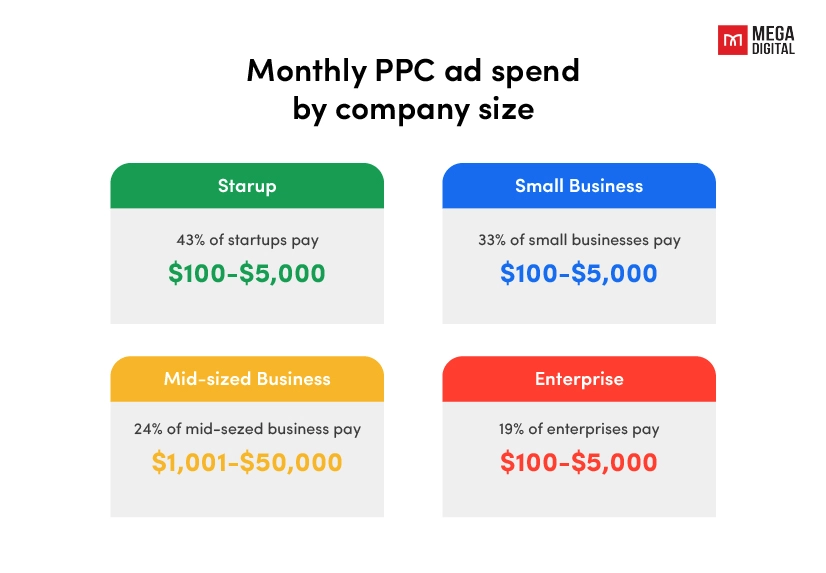
Based on Mega Digital Facebook advertising costs report, the typical Facebook ad costs are:
- CPC (Cost Per Click): between $0.26 and $0.50
- CPM (Cost Per Thousand Impressions): between $1.01 and $3.00
When setting up your Facebook ad campaign, first, choose a daily or total budget. You can use automatic bidding for optimized results, or alternatively, set bid amounts manually for more control.
If you’re thinking about hiring specialists to manage your Facebook PPC campaigns, contact Mega Digital for more information.
PPC Ads for Facebook: Best Practices
Here are 5 essential Facebook PPC best practices I found that can help you create effective campaigns to boost your conversions.
Use Specific Audience Targeting
One of the most effective ways to drive results with Facebook ads is to take full advantage of its precise audience targeting features. With access to an immense amount of user data, Facebook allows you to define your target audience based on various factors such as age, gender, demographics, interests and hobbies, location, and behaviors.
You can also build custom audiences using your existing customer data or create lookalike audiences, which will find new potential customers with similar characteristics to your current ones.
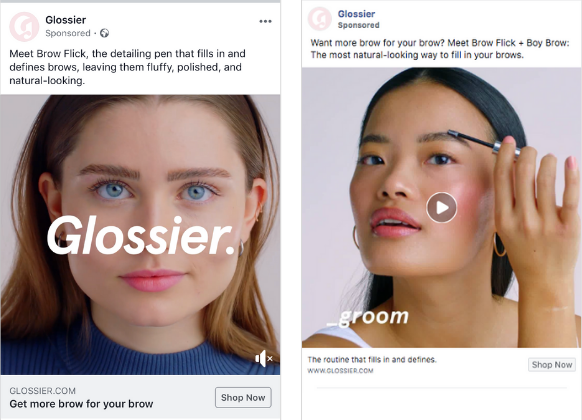
Glossier, a skincare brand, used Facebook’s targeting to create a lookalike audience based on their existing customer base, focusing on users interested in beauty and self-care. They use content related to skincare routines, makeup tips, and beauty products.
As a result, they achieved a 16x return on ad spend (ROAS) by reaching a highly relevant audience.
Create Realistic Advertising Creatives
Creating realistic and effective advertising creatives on Facebook is key to capturing users’ attention in a split second as they scroll through their feeds.
From my experience, it’s essential to use high-quality visuals and tailor ad copy that directly speaks to your target audience’s needs.
Let’s take Patagonia, which ran a highly successful Facebook campaign to promote their eco-friendly clothing line for example.
Patagonia’s campaign featured a 15-second video that focused on the environmental benefits of their products in action. The ad showed rugged outdoor scenes of people hiking in nature, emphasizing how the brand’s sustainable materials help reduce environmental impact.
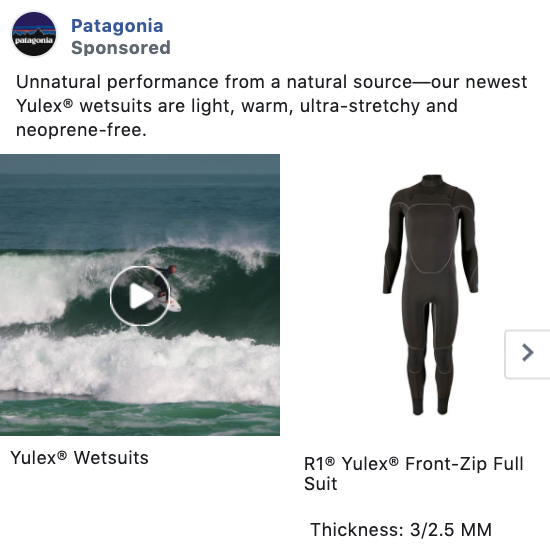
This visual storytelling, along with the CTA “Shop responsibly now,” resonated with eco-conscious consumers, boosting engagement and sales. What stood out was Patagonia’s emotional appeal—they sold a movement, not just a product.
Using high-quality visuals that reflect your brand’s values, combined with compelling copy, is key to campaign success.
Additionally, A/B testing different CTAs or imagery helps you identify what works best, driving better results for your ad spend.
>>> Read more: All Types of Facebook Ads You Need To Know – A Comprehensive Guide [2024]
Optimize a Landing Page
No matter how great your ad is, it won’t convert unless your landing page matches the message and provides a seamless user experience.
Warby Parker ran Facebook ads for their “Home Try-On” program, directing users to a matching, clean landing page with a simple sign-up form. This cohesive strategy led to a 30% increase in sign-ups.
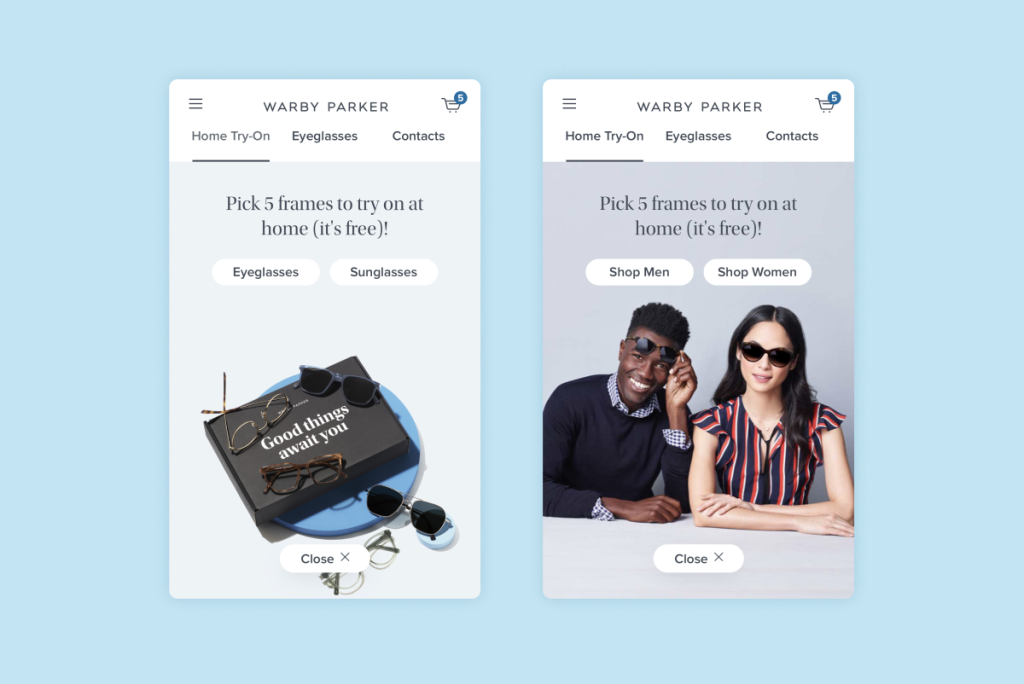
Additionally, it’s advised that you should ensure your landing page loads quickly, is mobile-friendly, and uses the same visuals or offer as the ad.
Set a Budget
Setting a realistic budget is critical for Facebook PPC success. For instance, HelloFresh, a meal kit delivery service, runs limited-time offers, adjusting their budget to focus on weekends when people are more likely to consider their service.
And, they really saw a significant rise in new customer sign-ups by increasing their budget during peak times.
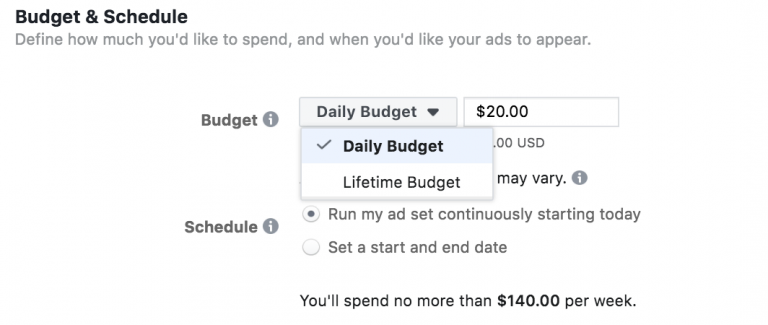
If you’re new, use Facebook’s automatic bidding to maximize your budget and avoid overspending.
For example, allocate more budget during key events like a product launch. Regularly review performance and adjust bids to target top-performing audiences for the best results.
Implement Data-Driven Optimization
Facebook’s Ads Manager provides a wealth of data, and using it to optimize your campaigns is essential. Track performance metrics like click-through rates (CTR), conversion rates, and return on ad spend (ROAS) to understand what’s working.
For example, Dollar Shave Club analyzed its ad data and noticed that shorter, humorous video ads performed better than long-form content. By focusing on bite-sized, witty videos, they saw a 20% boost in engagement.
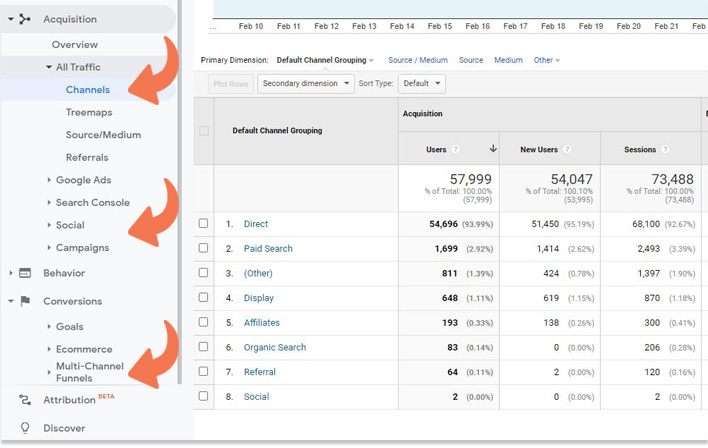
Tools like Google Analytics or Landingi’s EventTracker offer insights into user interactions on landing pages. If one ad performs better, adjust targeting, budget, or creatives to capitalize on the winning formula.
How to Measure the Success of Your Facebook PPC Campaign
To measure the success of your Facebook PPC campaign, you need more than just watching the clicks roll in, you need a strategy! By defining the right strategy for your campaign, you’ll turn insights into real improvements. So, let’s break it down.
Define Your KPIs
To accurately measure the success of your Facebook PPC campaign, you must first define your KPIs with precision. You need to start by asking, “What do I want this campaign to achieve?”
Your KPIs will depend on your specific goals such as driving website traffic, increasing conversions, or boosting brand awareness.
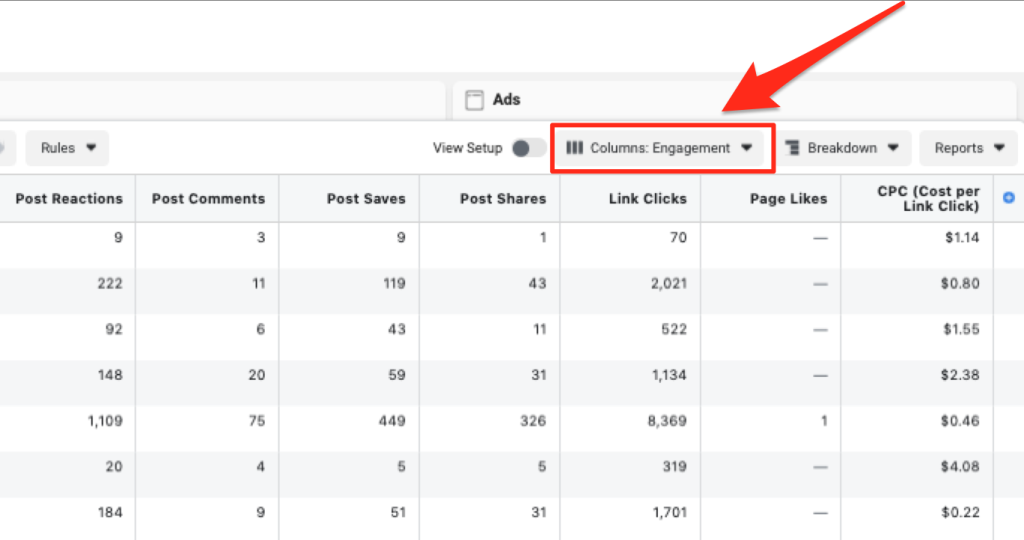
For example, if your goal is to sell a new product, focus on KPIs like conversion rate and return on ad spend (ROAS). Specifically, if you aim for a ROAS of 4:1, meaning $4 in revenue for every $1 spent, make that a clear, measurable target.
Track Your Metrics
Once your KPIs are in place, the next step is consistently tracking your campaign’s performance. Facebook Ads Manager provides a range of metrics, including impressions, clicks, conversion rate, and engagement rate. Therefore, knowing which to focus on is key.
For instance, if you’re aiming for conversions, pay close attention to metrics like cost per conversion (CPC) and conversion rate and make it a habit to check them daily, not just at the end of a campaign.
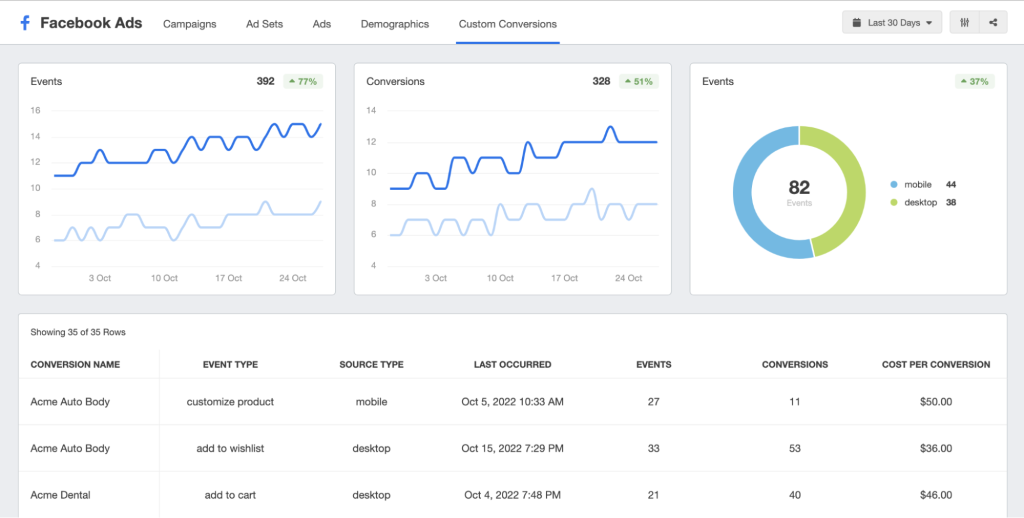
In doing so, you can catch potential issues early. For example, if your CPC is creeping up to $3 from an average of $1, you can take immediate action by pausing that specific ad, tweaking the ad copy or images, or reallocating your budget to a more effective strategy rather than letting it bleed.
Furthermore, tools like Google Analytics can be integrated to give even more insight, such as which audience segments are converting best or how much time users spend on your landing page.
Analyse Your Results
At this stage, it’s important to not just look at the numbers but analyze them. You can begin by asking why certain metrics are underperforming or overperforming.
For example, if one ad set is driving a lot of clicks like 1,000 but only converting 20 sales, this results in a conversion rate of 2%. This may indicate a disconnect between your ad’s message and the landing page.
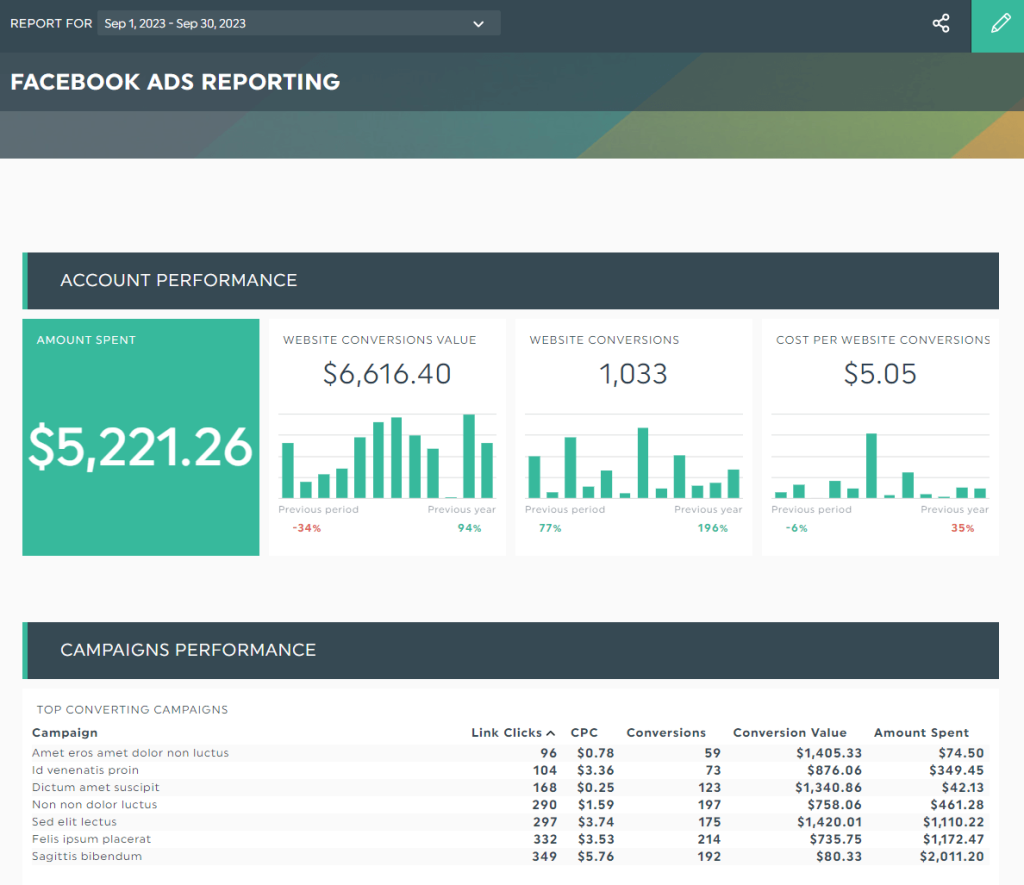
Review audience data to identify high-converting segments, like women aged 25-34 with a 4% conversion rate. Refine targeting based on this. Also, split test ad creatives to see which images or headlines boost engagement.
Optimize Your Campaigns
Finally, optimization is an ongoing process, not a one-time task. Based on your analysis, you can make the necessary adjustments to boost performance.
Start by refining your targeting. If your skincare ad performs best with women aged 25-34, focus on that demographic. Use dynamic ads to improve relevance based on user behavior. Also, test different formats, like switching from static images to carousels or videos, to boost engagement.
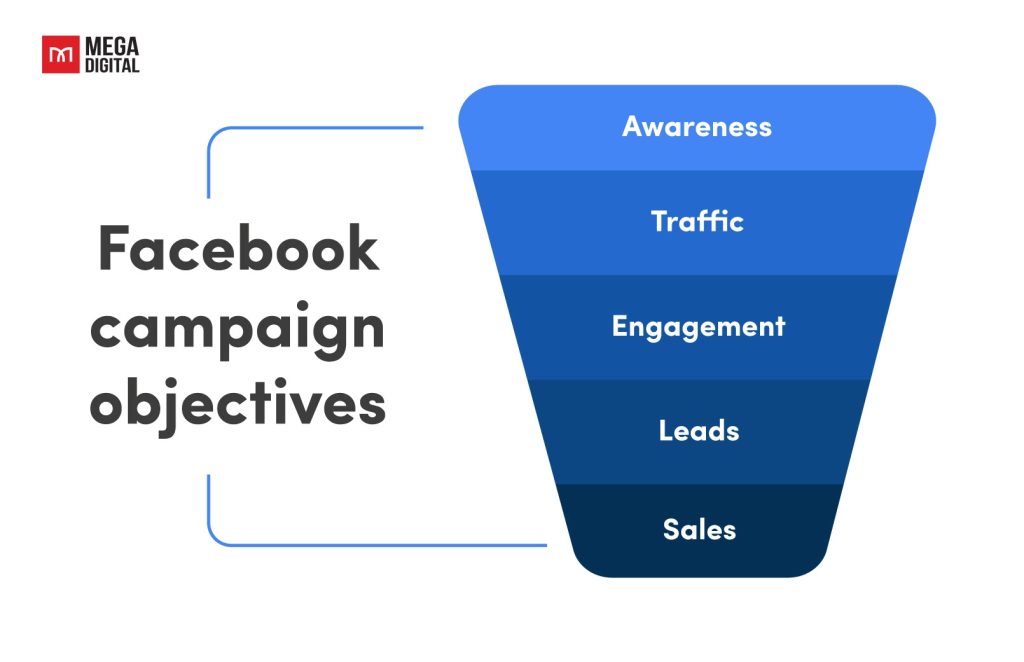
For example, if you notice that video ads showcasing customer testimonials consistently outperform static images in your metrics, consider investing more in video content.
Lastly, don’t hesitate to adjust your budget and allocate more funds to top-performing ads while cutting back on those that aren’t delivering.
Examples of PPC Facebook Advertising
Now let me walk you through these 3 examples of PPC Facebook advertising, as they highlight best practices in creating visually appealing and engaging campaigns on Facebook.
#1 MANSCAPED – Leveraging Video Ads
One of the most effective ad formats on Facebook, in my experience, is the video ad, and MANSCAPED does an excellent job utilizing this. They use a short, eye-catching video that shows up in users’ news feeds, making it nearly impossible to miss while people scroll through their feeds.
The video, which is just over 30 seconds, highlights the product in action and showcases its benefits. This type of video ad is perfect for capturing attention in a quick and dynamic way.
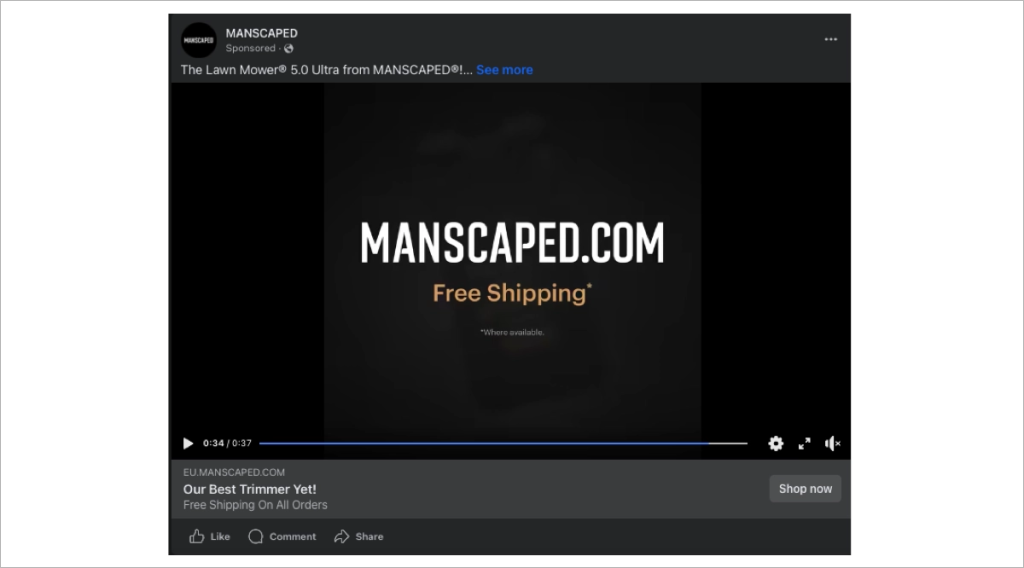
And, what really stands out to me is the simple yet powerful “Shop now” CTA button that takes users directly to a landing page. The page is well-optimized for mobile and desktop users alike, with fast loading times and consistent visuals that align with the ad.
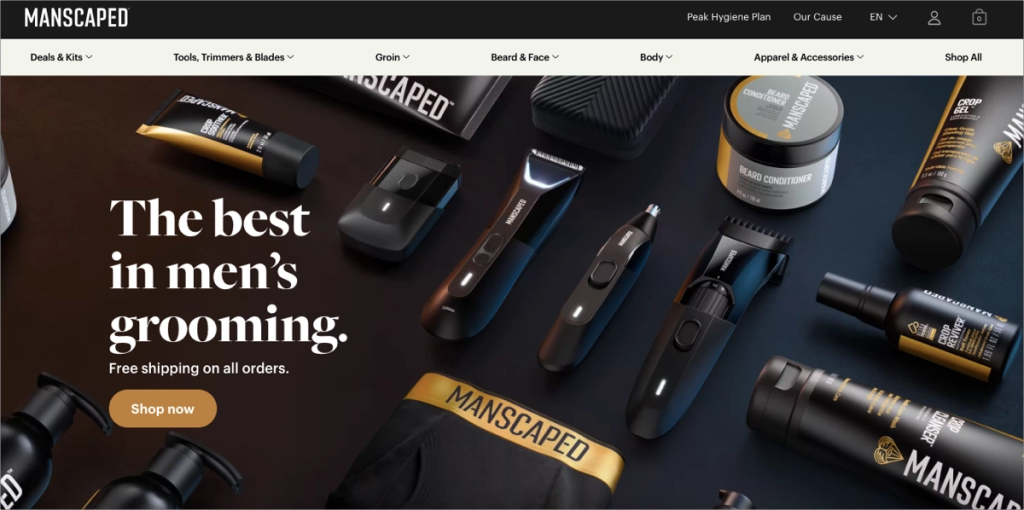
This seamless transition from ad to landing page is crucial, as it maintains the user’s focus and makes it easy for them to take action. For those of you looking to build brand awareness while driving conversions, following MANSCAPED’s approach would be a smart move.
#2 Byrokko – The Power of Image Ads
Next up is Byrokko, which uses a classic image ad to run its campaign. This format is the best recommendation for brands looking for a simple yet impactful way to get their message across.
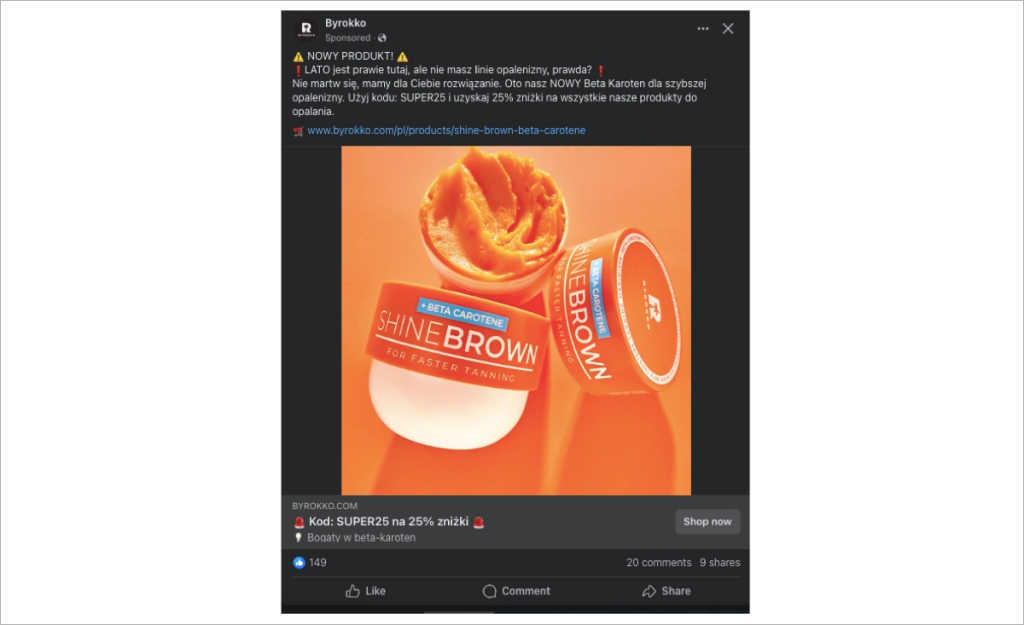
Byrokko’s ad stands out with a bold, eye-catching product image and compelling copy promoting a new product and special offer, driving user engagement.
What I like most is the seamless flow from the ad to a landing page via a clear CTA, leading users directly to the product page to redeem the discount. It’s a perfect example of simplicity and consistency—key elements in successful Facebook ad strategies.
#3 Raw Decor – Making the Most of Carousel Ads
Finally, there’s Raw Decor’s use of a carousel ad, a format that I find incredibly effective for e-commerce businesses. Carousel ads allow brands to showcase multiple products within a single ad, and Raw Decor nails this format.
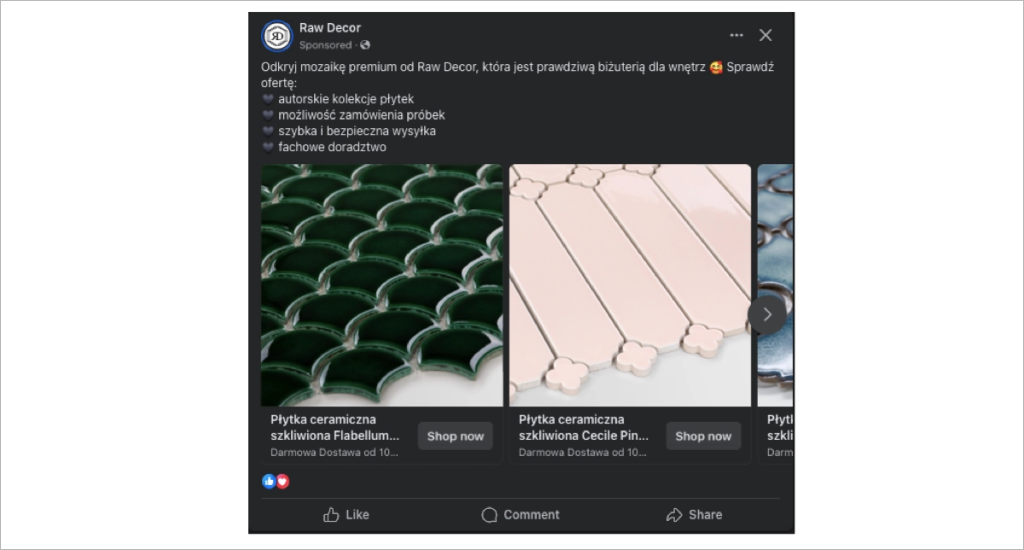
Each tile in the ad showcases a product with an image, brief description, and clear CTA, offering an interactive experience for users to explore multiple options.
The carousel format is user-friendly, allowing easy swiping through products, with each tile leading to a conversion-optimized landing page.
The consistency between the ad and landing pages ensures users are seamlessly guided to the right product.
Conclusion
Through this article, I’ve given you all the necessary information about Facebook PPC Advertising and tips to leverage it effectively. I hope it helps you in setting up your advertising campaign to maximize conversions and drive growth.







